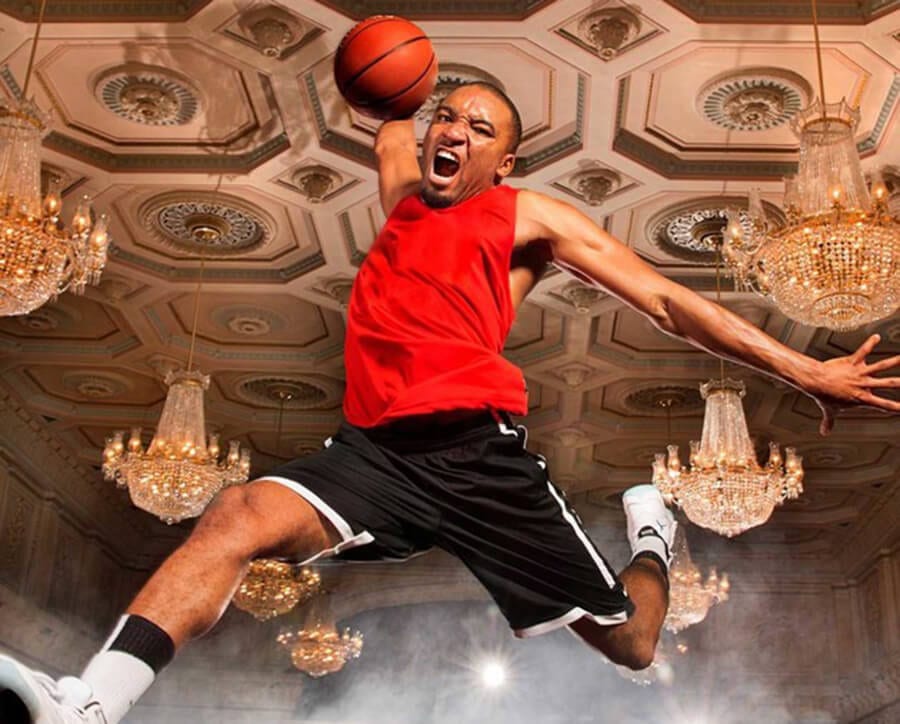Many hands and creative minds have gone into making The Spalding Suite the eclectic production it is. What makes this fact quite so remarkable is the seamless way the performance and visual mediums interlace. Beat boxing, basketball and street dance seem like likely partners to my mind, for the physical mastery they require as well as a some shared roots in their origin. Throw in the language of poetry and installation art and you have a work that really does achieve flight in moments.
On one level the show works as pure entertainment; Emmanuel Akwafo as the rooky player, Jay, brings some clownish relief to the aggressive energy of the other players. The interchanges between him and his team mates at moments have a slickly cartoonish feel and are nicely juxtaposed with the more balletic movements and the rawness of the spoken word. Watching Marcquelle Ward manoeuvre the ball around his body is worth paying to see alone. Reid works with a variety of performance styles and on more than one occasion his choices reminded me of the character vignettes favoured by dance troupe Flawless.
I get the sense that Eric Lau and MC Zani had a great time designing the aural experience of the show. Although for the most part offstage, Zani is as much a presence as the actors, creating the majority of the sound effects from the character’s footfalls to the swish of the ball through the air. A highlight is his one entrance on stage as an untouchable young player, beat boxing his way to annihilating the opposition. His skill alongside Lau’s music perfectly complements and retains the contemporary urban atmosphere that the text speaks of.
Sam-La Rose’s and Ayikwei Parkes’ poetry, with other contributing poets, comprises the text and adds depth to the masterful choreography. The sense of the rhythm of the language so subtly shares something of the rhythm of the game. Their work has been beautifully and cleverly structured to allow the focus of the piece to highlight individual characters at certain moments. It’s not directly Yawo’s story, however more of the focus lands on him and his internal struggle. After turning on his team and blaming them for losing a game, Yawo retreats into his past traumas and here the piece loses its momentum. Although Jason York is the one up in the air on hanging wires, a device Reid returns a little too frequently, in a sense the audience is left suspended with some confusing visual images and a bit of a cliched, echoey soundscape.
The production recovers quickly however. It culminates in a epic layering of tableaux; York suspended on the flying wire, the white frames which appear throughout the show to represent the court’s backboard, as well as metaphorical themes, interlace his legs and arms in a magnificent live sculpture. Boateng and Ward hang off a studded backdrop, mimicking Michelangeo’s The Creation Of Adam amongst other poses from the game. At this moment, the spoken poetry references the ‘ticks and stars’ and, not for the first time, I’m struck by the strong visual allusion to the athletic figures favoured by Nike adverts and the like. These references to past and contemporary giants show so effectively the sense of something legendary, the something that all basketball players long for.
I could go on; the piece makes room for so much more reflection, but I’ll let you find out for yourself.

